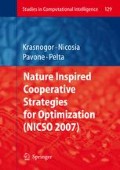Abstract
We present a formalism of sequential and asynchronous processes defined in terms of random or quantum grammars and argue that these processes have relevance in genome statistics. To make the article accessible to the nonmathematicians, we keep the mathematical exposition as elementary as possible, focusing on some general ideas behind the formalism and stating the implications of the known mathematical results. We close with a set of open challenging problems.
Access this chapter
Tax calculation will be finalised at checkout
Purchases are for personal use only
Preview
Unable to display preview. Download preview PDF.
References
M. Arndt and et al. Wave-particle duality of C 60 molecules. Nature, 401:680–682, 1999.
K. B. Athreya and P. Jagers, editors. Classical and modern branching processes, volume 84 of The IMA Volumes in Mathematics and its Applications. Springer-Verlag, New York, 1997.
J. G. Bednorz and K. A. Müller. Perovskite-type oxides. the new approach to high-Tc superconductivity. Reviews of Modern Physics, 60(3):585–600, 1988.
O. Bratteli and D. W. Robinson. Operator algebras and quantum statistical mechanics. 2. Springer-Verlag, Berlin, 1997.
N. Chomsky. Aspects of the theory of syntax. The MIT press, 1965.
F. Comets, M. Menshikov, and S. Popov. Lyapunov functions for random walks and strings in random environment. Ann. Probab., 26:1433–1445, 1998.
Matthew J. Donald. A review of Johnjoe McFadden’s book “Quantum evolution”, (2001). http://www.citebase.org/abstract?id=oai:arXiv.org:quant-ph/0101019.
Julia Kempe. Discrete quantum walks hit exponentially faster. Probab. Theory Related Fields, 133(2):215–235, 2005.
Philippe Leroux. Coassociative grammar, periodic orbits, and quantum random walk over Z. Int. J. Math. Math. Sci., 24:3979–3996, 2005.
R. Lyons and R. Pemantle. Random walk in a random environment and first passage percolation on trees. Ann. Probab., 20:125–136, 1991.
V. A. Malyshev. Random grammars. Uspekhi Mat. Nauk, 53(2):107–134, 1998.
V. A. Malyshev. Quantum grammars. J. Math. Phys., 41(7):4508–4520, 2000.
J. McFadden and J. Al-Khalili. A quantum mechanical model of adaptive mutation. Biosystems, 50(3):203–211, 1999.
M. Menshikov and D. Petritis. On random walks in random environment on trees and their relationship with multiplicative chaos. In Mathematics and computer science, II (Versailles, 2002), pages 415–422. Birkhäuser, Basel, 2002.
M. Menshikov, D. Petritis, and S. Popov. A note on matrix multiplicative cascades and bindweeds. Markov Process. Related Fields, 11(1):37–54, 2005.
A. Patel. Mathematical physics and life. In Computing and Information Sciences: Recent Trends, pages 271–294. J.C. Misra, Narosa Publishing House, 2003.
Roger Penrose. Shadows of the mind. Oxford University Press, Oxford, 1994. A search for the missing science of consciousness.
D. Petritis. Mathematical foundations of quantum mechanics and applications to quantum computing, communication, and cryptography. (2004). http://perso.univ-rennes1.fr/dimitri.petritis/ps/qiccc.pdf.
Y. Sakakibara, M. Brown, R. Hughey, I. Saira Mian, K. Sjölander, R. C. Underwood, and D. Haussler. Stochastic context-free grammars for tRNA modeling. Nucleic Acids Research, 22(23):5112–5120, 1994.
Erwin Schrödinger. What is life? Cambridge University Press, Cambridge, 1944.
V. S. Varadarajan. Geometry of quantum theory. Springer-Verlag, New York, second edition, 1985.
Author information
Authors and Affiliations
Editor information
Editors and Affiliations
Rights and permissions
Copyright information
© 2008 Springer-Verlag Berlin Heidelberg
About this chapter
Cite this chapter
Petritis, D. (2008). An Approach to Genome Statistics Inspired by Stochastic or Quantum Models of Computing: A Survey. In: Krasnogor, N., Nicosia, G., Pavone, M., Pelta, D. (eds) Nature Inspired Cooperative Strategies for Optimization (NICSO 2007). Studies in Computational Intelligence, vol 129. Springer, Berlin, Heidelberg. https://doi.org/10.1007/978-3-540-78987-1_26
Download citation
DOI: https://doi.org/10.1007/978-3-540-78987-1_26
Publisher Name: Springer, Berlin, Heidelberg
Print ISBN: 978-3-540-78986-4
Online ISBN: 978-3-540-78987-1
eBook Packages: EngineeringEngineering (R0)

